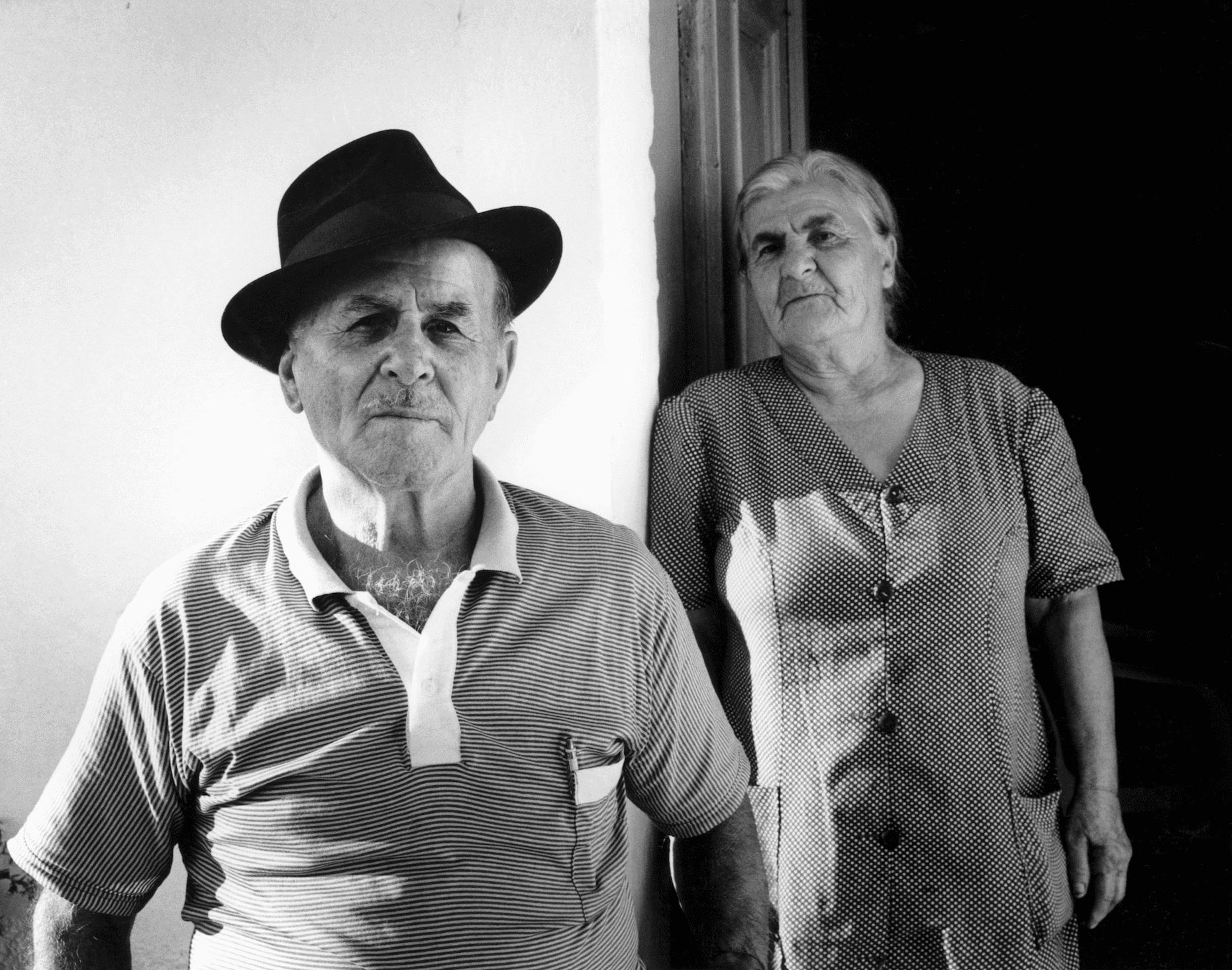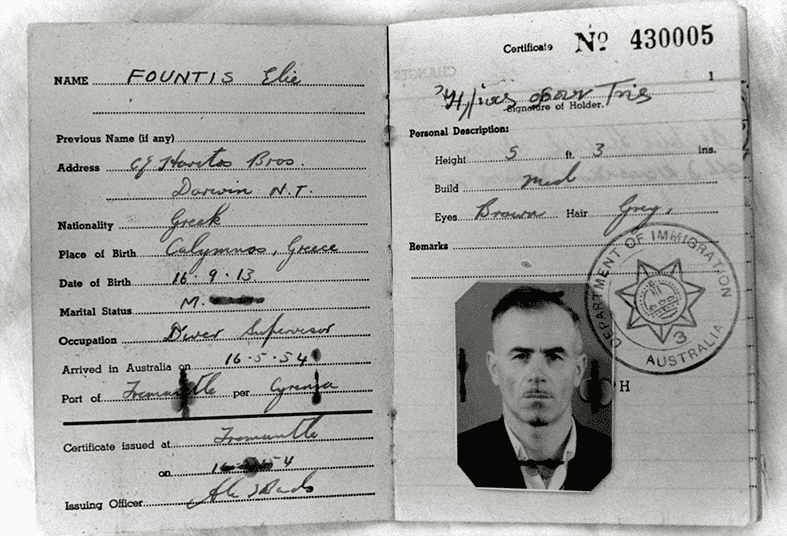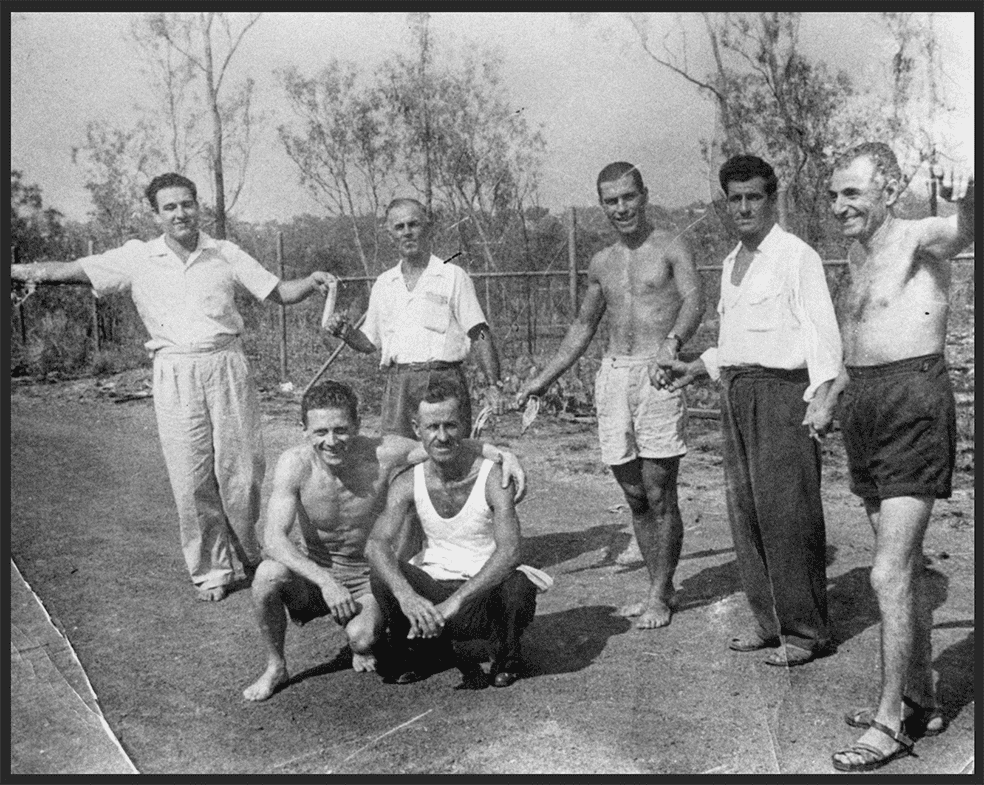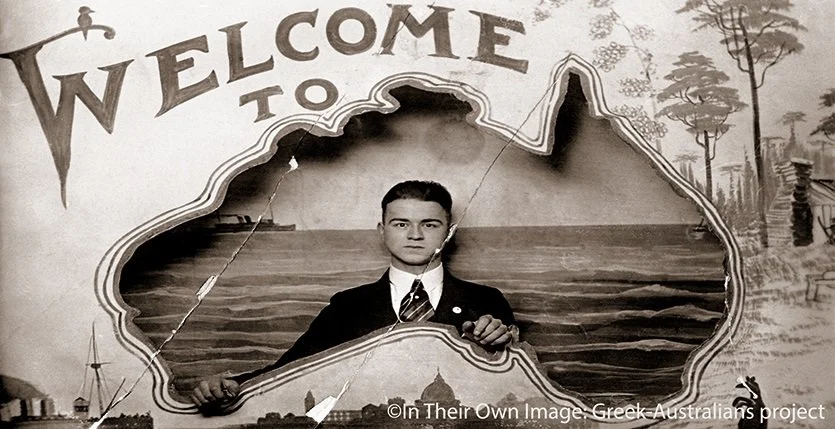Greek City Times is proud to present a weekly historical snapshot
from the archives of the ‘In Their Own Image: Greek Australians’ national project
by photographer Effy Alexakis and historian Leonard Janiszewski.

Elias was a member of the first Kalymnian sponge diving crew brought out to Australia to dive for pearl shell in seas off the continent’s north-west coast. He arrived in May 1954 as a ‘diver supervisor’ within a crew of twelve. The crew were based in Darwin. A second crew arrived in 1955 and despatched to Broome.
Following World War II, with the barring of Japanese divers and crews from the Australian pearling fields, replacements had to be found. The Kalymnian Brotherhood in Sydney suggested that replacement crews should be sought from amongst the unemployed sponge divers on Kalymnos; a synthetic cellulose sponge had been developed and demand for the natural product had slowly begun a downward slide. The Brotherhood’s suggestion was taken very seriously, particularly given the highly successful use of Kalymnian divers at Tarpon Springs in Florida, USA, from the 1890s onwards.
An Australian Immigration Department official, Eugene Gorman, visited Kalymnos in late 1951 and found numerous potential recruits all elated by the possibility of migrating to Australia. Charmian Clift’s and George Johnston’s collaborative novel, The Sponge Divers, written during their nine month sojourn on Kalymnos from December 1954 to August 1955, suggests the emotional effervescence ignited by the potential of migration to Australia: ‘All Kalymnos is unsettled, restless, drunk with these ridiculous hopes and expectations... [to] be able to go to’.
Unfortunately the diving system used by the Australian pearl luggers was different to that with which the Kalymnians were familiar – ‘half’ deep-sea diving suits were employed rather than ‘full’ suits – and the huge tides and murky tropical waters off the north-west Australian coast were a stark contrast to the calm clarity of the Mediterranean where tidal changes are often imperceptible. In May 1956, following the death of one of the divers, Hristos Kontoyiannis, Kalymnian crew members broke their contracts and sought land-based employment in Darwin – principally in the building industry.
Elias obtained building work over the next two decades. His wife Anna, however, remained on Kalymnos and did not arrive in Australia until 1981. Three years later, the couple returned to Kalymnos.
‘I wish I was there still [Darwin], but now I’m an old man… I went for work… We [myself and my wife] didn’t know whether we wanted to stay. I would have liked to stay longer… I had my mother here [in Kalymnos]… My wife wanted to see her daughter and the grandchildren… So we came back [to Kalynmos]… I did 30 years straight in Darwin… We went nowhere else, only Katherine, Wyndham, Gove, that’s all… Then came back here [to Kalymnos]… The wife… 28 years she was on her own here [on Kalymnos]… It was bad of me for not taking my wife earlier, I would be a different person… What’s money? Health is the main thing… That was bad of me, she suffered here to “lose” her husband. Anyway, that wasn’t a good thing. But now, thank God, we’re good here now.’

Fountis: ‘They [the Australian Department of Immigration] sent for us [Kalymnian crews] – we didn’t pay anything. Four to five months we worked on the boat [pearling lugger]… We had to look for other work when the diving [for pearl shell] wasn’t going well.’
Document courtesy of I. Fountis, from the In Their Own Image: Greek-Australians National Project Archives

Elias Fountis (standing second from left) became a carpenter, building houses, following the failure of the Kalymnian crews to successfully adapt to northern Australian waters.
Photo courtesy of E. Fountis, from the In Their Own Image: Greek-Australians National Project Archives
Photos: Effy Alexakis
Historical Research: Leonard Janiszewski
© In Their Own Image: Greek-Australians National Project Archives
ABOUT EFFY ALEXAKIS & LEONARD JANISZEWSKI
Since the early 1980s, Effy Alexakis, a photographer, along with historian researcher Leonard Janiszewski, have been travelling around Australia photographing and collecting stories. They have also photographed Greek-Australians in Greece and documented some amazing histories. The images and text provide personal, diverse and powerfully moving insights, about opportunities, hopes and challenges. Collectively, these stories provide personal perspectives of a diasporic Hellenic identity. Their archive encompasses photography, both historical and contemporary, taped interviews and literary materials.
They have published 3 books and numerous articles, and their projects are ongoing. The photographs have been widely exhibited throughout Australia and in Greece.
VISIT THEIR LATEST PROJECT: Greek Cafés & Milk Bars of Australia | Facebook


